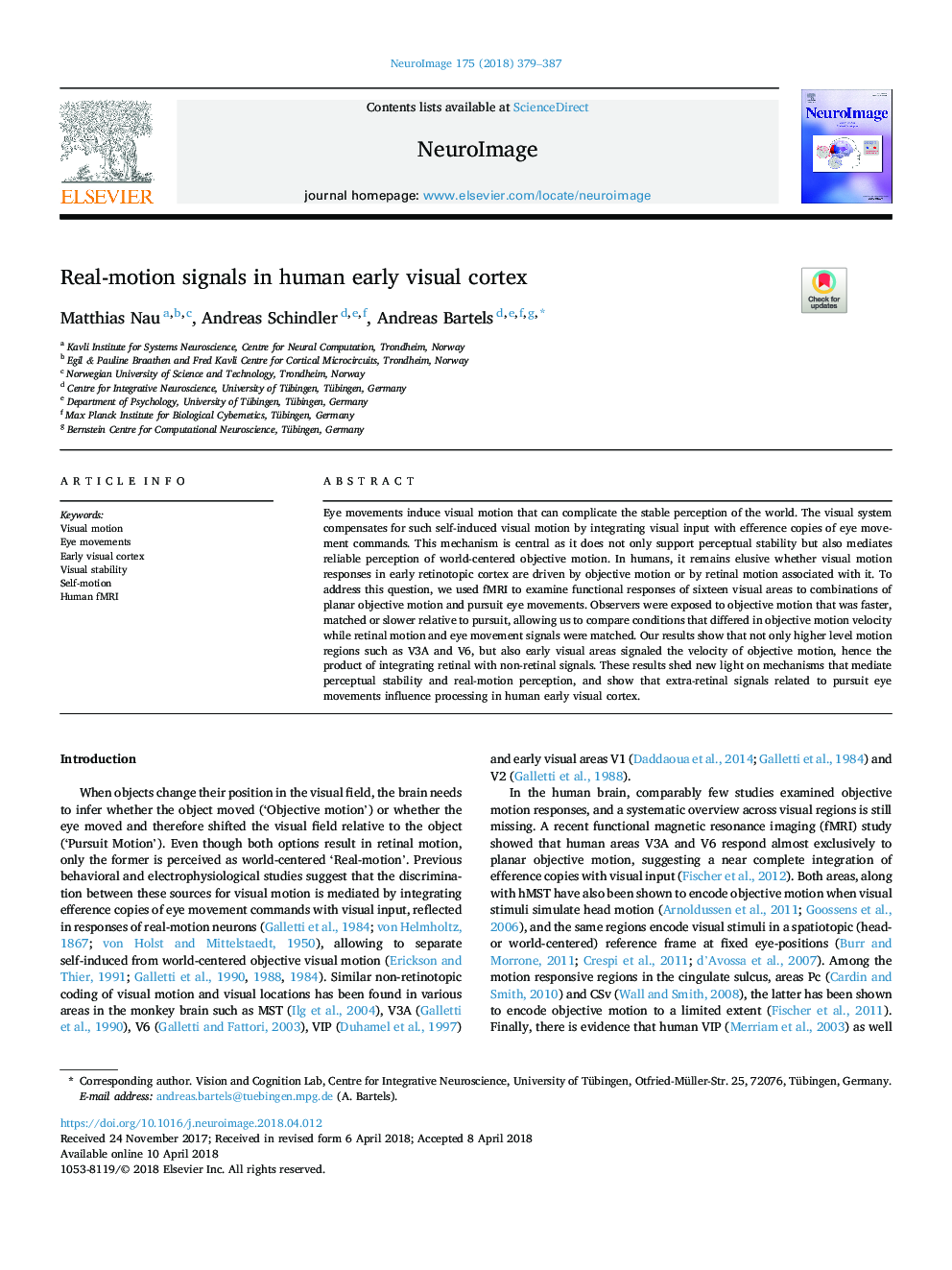| Article ID | Journal | Published Year | Pages | File Type |
|---|---|---|---|---|
| 8686888 | NeuroImage | 2018 | 9 Pages |
Abstract
Eye movements induce visual motion that can complicate the stable perception of the world. The visual system compensates for such self-induced visual motion by integrating visual input with efference copies of eye movement commands. This mechanism is central as it does not only support perceptual stability but also mediates reliable perception of world-centered objective motion. In humans, it remains elusive whether visual motion responses in early retinotopic cortex are driven by objective motion or by retinal motion associated with it. To address this question, we used fMRI to examine functional responses of sixteen visual areas to combinations of planar objective motion and pursuit eye movements. Observers were exposed to objective motion that was faster, matched or slower relative to pursuit, allowing us to compare conditions that differed in objective motion velocity while retinal motion and eye movement signals were matched. Our results show that not only higher level motion regions such as V3A and V6, but also early visual areas signaled the velocity of objective motion, hence the product of integrating retinal with non-retinal signals. These results shed new light on mechanisms that mediate perceptual stability and real-motion perception, and show that extra-retinal signals related to pursuit eye movements influence processing in human early visual cortex.
Related Topics
Life Sciences
Neuroscience
Cognitive Neuroscience
Authors
Matthias Nau, Andreas Schindler, Andreas Bartels,
